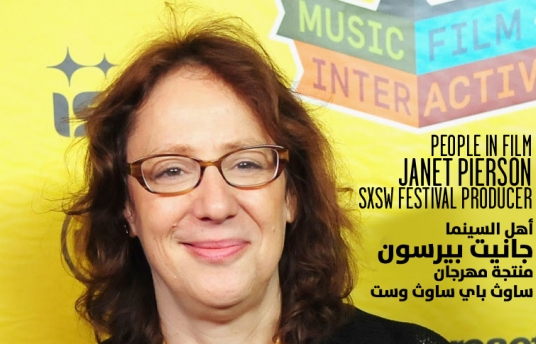People in Film: Janet Pierson
Mar 12, 2012

Written by Stephen Dalton
What are your personal highlights from this year’s SXSW film programme?
JP: I never know how to answer that. I just can’t! I’ve waded through 2000 features to come up with 130 that I really stand behind. I genuinely really like all of them, maybe to different degrees, but there is something exciting and wonderful about all of them. What I’m most proud of is the range, the different kind of films we have here – from the bigger, highly anticipated films like “Cabin The Woods” and “21 Jump Street” to films that are made just completely out of thin air with brand new, emerging talent and unknown actors. And everything in the middle.
SXSW film festival is best known for rock documentaries, youth-centric dramas, new talent and cultish genre movies – is that a fair summary?
JP: That’s certainly part of it but not all of it. We certainly have a strength in emerging talent, and there is a lot of it here. We definitely look for films with an edge – a couple of films we took out of Sundance are “Compliance” and “The Comedy”, not the easiest choices, both quite controversial. But we also took “Safety Not Guaranteed”, which is just highly entertaining and really good.
How important are documentaries to this year’s SXSW programme?
JP: There are 132 features, 58 are documentaries, 74 narratives. There is not a quota in place but some years it is half and half. The documentaries are really great – there is one on Danny Way, a skateboarder who jumped over the Great Wall of China, a subject I did not know anything about. There’s another called “Degenerate Art”, about the culture and business of glass blowing specifically for pipes – which is fascinating! We’re showing “Lost In Sound”, a wonderful film made by a partially hearing-impaired director about a music critic who loses part of his hearing, a dancer who has been deaf since birth, and a pianist who lost her hearing as an infant.
SXSW started as a music festival in 1987, with the film and interactive offshoots launching seven years later. How much is the film festival still overshadowed by the music festival?
JP: It is smaller in size but it stands shoulder to shoulder with the music and interactive festivals. We are a nine-day festival and a five-day conference, but the films run throughout the festival – nine days, 120 venues, 14 screens, and we just feel like they all make each other richer. There are an awful lot of film festivals, but I think what makes us unique – beside the fact we have great programming – is you will never get this crossover in any other environment that you do here, with interactive and music.
Has the global credit crunch impacted on visitors to SXSW?
JP: Our numbers are up significantly, across the board. Every badge category is up. I think it’s because we are known for DIY culture. That started with music, independent bands, then independent films, and with the interactive side that translates into entrepreneurs and start-ups. I think SXSW is a place that people look to as the future: what’s next? What can I do to take my future in my own hands? People look to us and think: how can I be around a lot of other creative people and figure out what’s the next move?
Why should a visiting film fan or industry professional choose SXSW?
JP: Because of the unique culture that comes from the interactive and music festivals being here. Austin has great weather for the most part, and it’s a very friendly town. There is a fun, enthusiastic niceness here that people like enormously. Somehow the combustion or the alchemy of the Austin audiences, and the high quality of the work you can find here, seems to make it unique. People really have fun here, they come here with a great attitude – I have tremendous respect for Sundance, they do incredible work, but the weather is snowy and its hard work. People come to SXSW with an attitude that they are going to have good time.